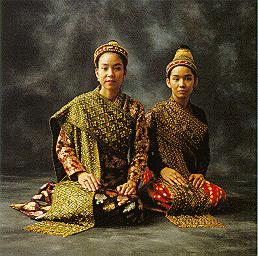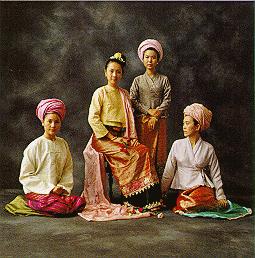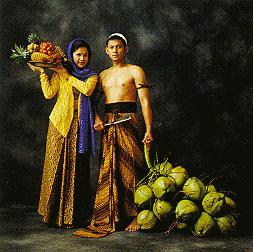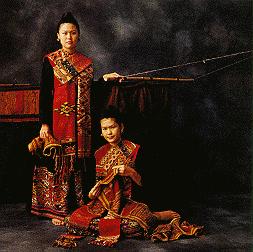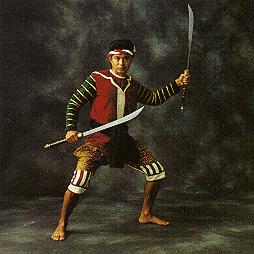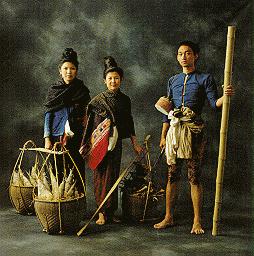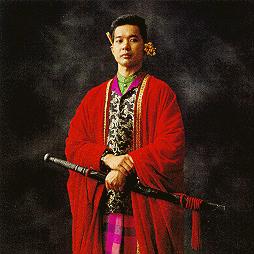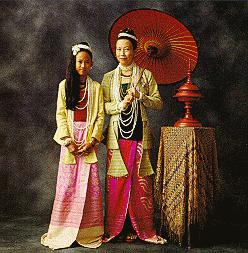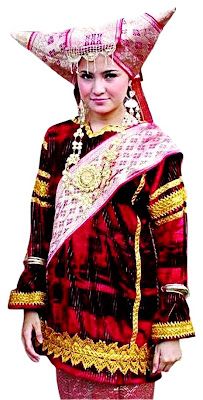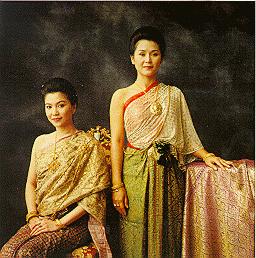
Ratanakosin
In central Thailand, during the early Ratanakosin era (approximately 150 years ago), court ladies liked to wear brocaded tube-skirts with front-pleated lengths of cloth. They also wore tube-skirts painted with gold leaf to indicate that they were of high royal rank. On top, the ladies wrapped a thin silk sabai, accordion pleated and worn off one shoulder as an inner garment, and covered this with a more elaborate wrap that was completely embroidered with gold and silver sequins. This court attire was embellished with jewelry made with gold and rough cut diamonds or gold with red and green enamel. Since royalty did not favour the wearing of earrings during the early Ratanakosin period, earrings were not popularly worn.
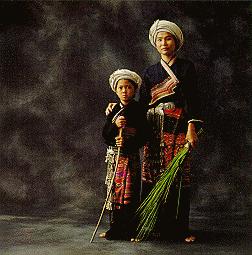
Tai-Lue
The Tai-Lue tribes people from Chiang Khong in the north of Thailand continue to dress in the same manner that they have over the ages. The woman wrap white or light coloured cloth in a turban around their heads. Their blouses, which open to one side, are indigo-dyed and edged with cloth of various hues. They wear ankle-length tube-skirts, woven in various colourful weaving techniques in the middle and the hem-piece is decorated with a strip of indigo-dyed cloth. Their ornaments are made of silver and coloured enamel, etched in patterns of butterflies, birds and flowers. Silver is also crafted into long chains which are hung from the waist to graze the knee. The small silver bells at the ends make a tinkling sound when the women move.
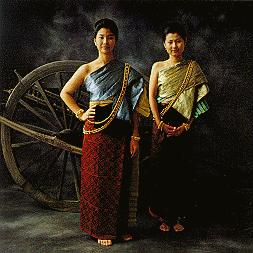
Aristocratic Tai-Lao
Aristocratic Tai-Lao ladies from the southern part of north-east Thailand wore tie-dyed mudmee (Ikat) silk tube-skirts or pasin that were pressed to show lovely folds when worn. The dark red shades of the pasin were the result of Khmer influences. The ladies wrapped a pleated sabai across one shoulder. Popular jewelry pieces were golden body chains worn across one shoulder, gold bracelets and bangles.
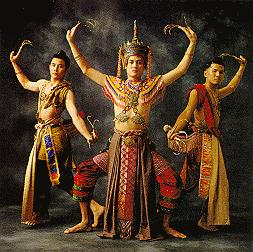
Nohra
Costumed Nohra dancers from southern Thailand display the typical dance movements. The main dancer wore a head dress called the Terd from which two fresh flower garlands hung from either side. He wore gathered jong karbane pants with fabric pieces hung in front, the brocaded central piece being the most ornate. The supporting dancer were similarly dressed but did not wear the head dress. All had long metallic nails decorated with coloured beads and a tail piece. The present day costumes of Nohra dancers have been modified from these costumes which were popular during the reign of Rama V, in the latter half of the Nineteenth Century.
